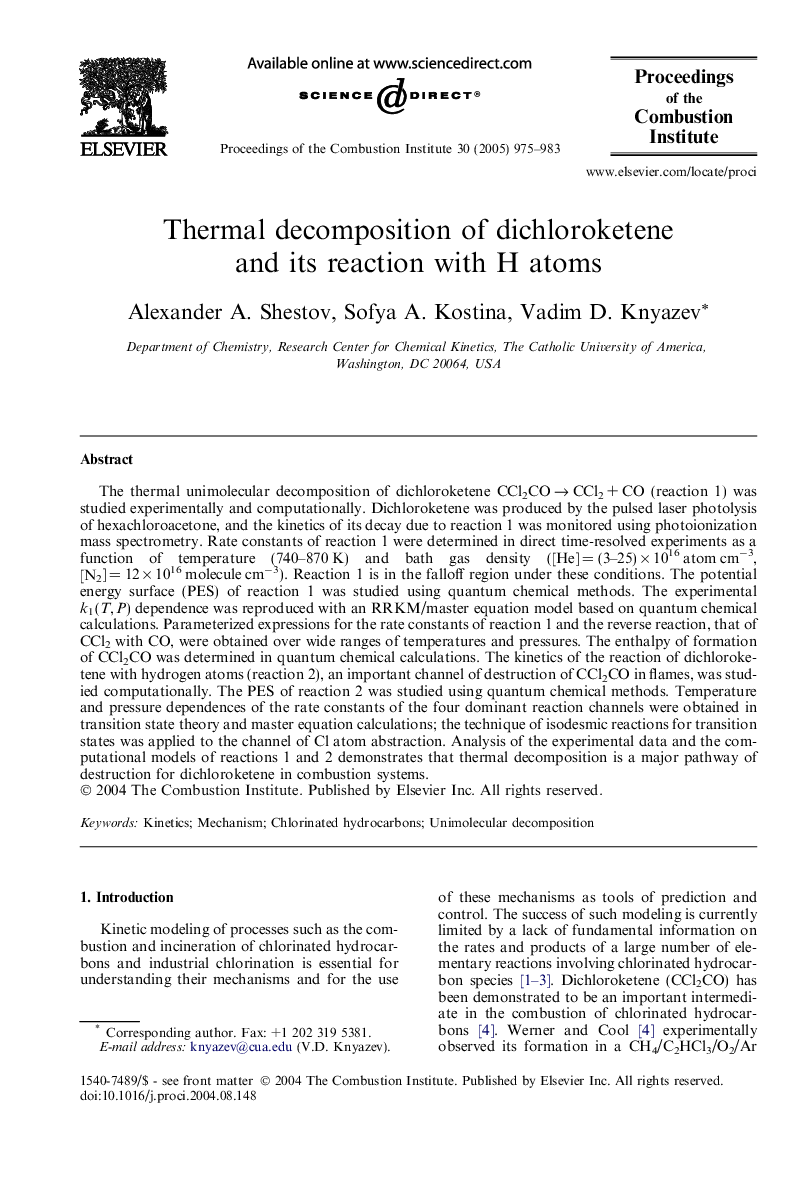| Article ID | Journal | Published Year | Pages | File Type |
|---|---|---|---|---|
| 9637425 | Proceedings of the Combustion Institute | 2005 | 9 Pages |
Abstract
The thermal unimolecular decomposition of dichloroketene CCl2CO â CCl2 + CO (reaction 1) was studied experimentally and computationally. Dichloroketene was produced by the pulsed laser photolysis of hexachloroacetone, and the kinetics of its decay due to reaction 1 was monitored using photoionization mass spectrometry. Rate constants of reaction 1 were determined in direct time-resolved experiments as a function of temperature (740-870 K) and bath gas density ([He] = (3-25) Ã 1016 atom cmâ3, [N2] = 12 Ã 1016 molecule cmâ3). Reaction 1 is in the falloff region under these conditions. The potential energy surface (PES) of reaction 1 was studied using quantum chemical methods. The experimental k1 (T, P) dependence was reproduced with an RRKM/master equation model based on quantum chemical calculations. Parameterized expressions for the rate constants of reaction 1 and the reverse reaction, that of CCl2 with CO, were obtained over wide ranges of temperatures and pressures. The enthalpy of formation of CCl2CO was determined in quantum chemical calculations. The kinetics of the reaction of dichloroketene with hydrogen atoms (reaction 2), an important channel of destruction of CCl2CO in flames, was studied computationally. The PES of reaction 2 was studied using quantum chemical methods. Temperature and pressure dependences of the rate constants of the four dominant reaction channels were obtained in transition state theory and master equation calculations; the technique of isodesmic reactions for transition states was applied to the channel of Cl atom abstraction. Analysis of the experimental data and the computational models of reactions 1 and 2 demonstrates that thermal decomposition is a major pathway of destruction for dichloroketene in combustion systems.
Related Topics
Physical Sciences and Engineering
Chemical Engineering
Chemical Engineering (General)
Authors
Alexander A. Shestov, Sofya A. Kostina, Vadim D. Knyazev,
